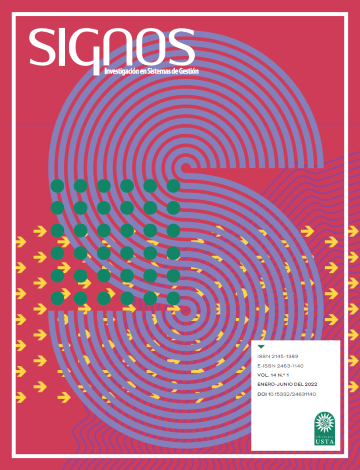Salud y seguridad psicológicas en el trabajo: gestión de peligros y riesgos psicosociales. Panorama investigativo y normativo
Resumo (pt)
En la actualidad las organizaciones se ven en la necesidad de implantar diferentes estrategias herramientas de gestión que favorezcan su sostenibilidad ante peligros existentes y emergentes. En los últimos años han surgido peligros emergentes derivadas de la incorporación de las tecnologías de la información y la comunicación, la innovación en procesos, las nuevas formas de vinculación, nuevas materias primas y herramientas de trabajo, la pandemia generada por el SARS COV 2, entre otros aspectos. estos peligros conllevan hay nuevas formas de enfermar y a otros factores de riesgo asociados, uno de ellos tiene que ver con los aspectos psicosociales.
Referências
Aldasoro, J. C., & Cantonnet, M. L. (2021). The management of the new and emerging musculoskeletal and psychosocial risks by EU-28 enterprises. Journal of Safety Research, 77, 277-287. https://doi.org/10.1016/j.jsr.2021.03.011
Baç, N., & Ekmekçi, I. (2021). Psychosocial risk assessment using COPSOQ II questionnaire—A case study with maintenance workers in a metal plant in Istanbul Turkey. Heliyon, 7(4), e06777. https://doi.org/10.1016/j.heliyon.2021.e06777
Bentley, T. A., Teo, S. T. T., Nguyen, D. T. N., Blackwood, K., Catley, B., Gardner, D., Forsyth, D., Bone, K., Tappin, D., D’Souza, N., & Port, Z. (2021). Psychosocial influences on psychological distress and turnover intentions in the workplace. Safety Science, 137, 105200. https://doi.org/10.1016/j.ssci.2021.105200
Dahler-Larsen, P., Sundby, A., & Boodhoo, A. (2020). Can occupational health and safety management systems address psychosocial risk factors? An empirical study. Safety Science, 130, 104878. https://doi.org/10.1016/j.ssci.2020.104878
Gray, B., Eaton, J., Christy, J., Duncan, J., Hanna, F., & Kasi, S. (2021). A proactive approach: Examples for integrating disaster risk reduction and mental health and psychosocial support programming. International Journal of Disaster Risk Reduction, 54, 102051. https://doi.org/10.1016/j.ijdrr.2021.102051
Hu, Q., Dollard, M. F., & Taris, T. W. (2022). Organizational context matters: Psychosocial safety climate as a precursor to team and individual motivational functioning. Safety Science, 145, 105524. https://doi.org/10.1016/j.ssci.2021.105524
Icontec. (2021). GTC-ISO 45003:2021 Gestión de la seguridad y salud en el trabajo—Seguridad y salud psicológicas en el trabajo—Directrices para la gestión de los riesgos psicosociales. Icontec.
Jespersen, A. H., & Hasle, P. (2017). Developing a concept for external audits of psychosocial risks in certified occupational health and safety management systems. Risk Analysis Validation and Trust in Risk management, 99, 227-234. https://doi.org/10.1016/j.ssci.2016.11.023
Moreno Martínez, M., Fernández-Cano, M. I., Feijoo-Cid, M., Llorens Serrano, C., & Navarro, A. (2022). Health outcomes and psychosocial risk exposures among healthcare workers during the first wave of the COVID-19 outbreak. Safety Science, 145, 105499. https://doi.org/10.1016/j.ssci.2021.105499
Oakman, J., Weale, V., Kinsman, N., Nguyen, H., & Stuckey, R. (2022). Workplace physical and psychosocial hazards: A systematic review of evidence informed hazard identification tools. Applied Ergonomics, 100, 103614. https://doi.org/10.1016/j.apergo.2021.103614
Potter, R., O’Keeffe, V., Leka, S., Webber, M., & Dollard, M. (2019). Analytical review of the Australian policy context for work-related psychological health and psychosocial risks. Safety Science, 111, 37-48. https://doi.org/10.1016/j.ssci.2018.09.012
Taibi, Y., Metzler, Y. A., Bellingrath, S., & Müller, A. (2021). A systematic overview on the risk effects of psychosocial work characteristics on musculoskeletal disorders, absenteeism, and workplace accidents. Applied Ergonomics, 95, 103434. https://doi.org/10.1016/j.apergo.2021.103434
Como Citar
Licença
Copyright (c) 2021 SIGNOS-Investigación en Sistemas de Gestión

Este trabalho está licenciado sob uma licença Creative Commons Attribution-NonCommercial-ShareAlike 4.0 International License.
Os autores possuem os direitos sobre os artigos e, portanto, têm a liberdade de dividir, copiar, distribuir, executar e comunicar publicamente a obra sob as seguintes condições:
Reconhecer os créditos da obra da forma detalhada pelo autor ou licenciante (mas não de uma forma que possa sugerir que tem seu suporte ou que suportam o uso feito da sua obra).
SIGNOS está com uma licença Creative Commons Atribución-NoComercial-CompartirIgual 4.0 Internacional (CC BY-NC-SA 4.0)

A Universidad Santo Tomás conserva os direitos patrimoniais (copyright) das obras publicadas, favorecendo e permitindo a sua reutilização sob a licença acima indicada.






